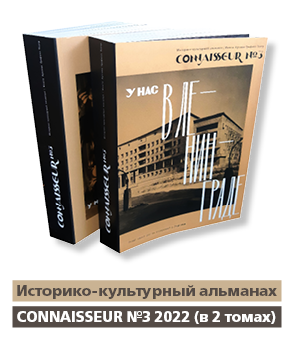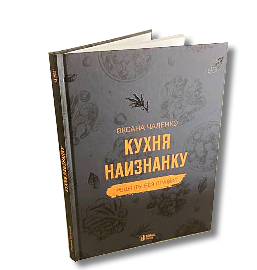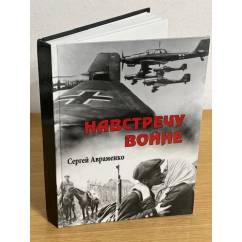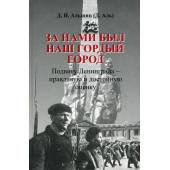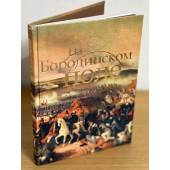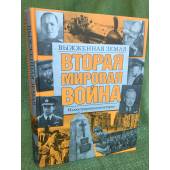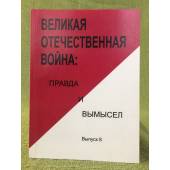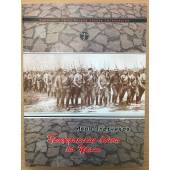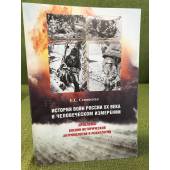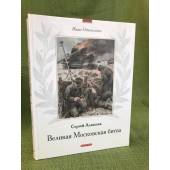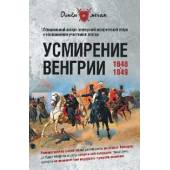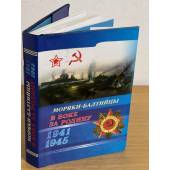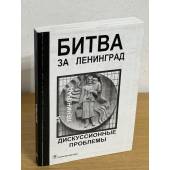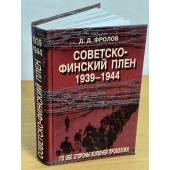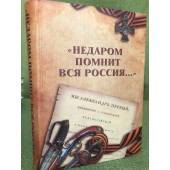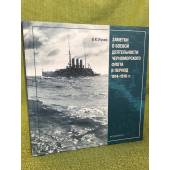
No products
Product successfully added to your shopping cart
There are %d items in your cart. There is 1 item in your cart.

Categories
- Albums (2086)
- Antique (before 1850) old books (before 1941) (592)
- Art and culture (5332)
- Audiobooks, compact discs (CD) (121)
- Autographed books (249)
- Board games (19)
- Books for school (4574)
-
Books in foreign languages
(8328)
- Books in Altai (4)
- Books in Azerbaijani (47)
- Books in Belarusian (46)
- Books in Bulgarian (2)
- Books in Dutch (2)
- Books in English (6492)
- Books in Estonian (10)
- Books in Finnish (7)
- Books in French (43)
- Books in Georgian (37)
- Books in Greek (2)
- Books in Hungarian (6)
- Books in Italian (12)
- Books in Japanese (7)
- Books in Karelian (3)
- Books in Kyrgyz language (6)
- Books in Latvian (46)
- Books in Lithuanian (8)
- Books in Norwegian (4)
- Books in Polish (14)
- Books in Portuguese (2)
- Books in Slovak (2)
- Books in Spanish (17)
- Books in Swedish (3)
- Books in Tajik (34)
- Books in the Adyghe language (3)
- Books in the Balkar language (8)
- Books in the Bashkir language (73)
- Books in the Buryat language (5)
- Books in the Kalmyk language (8)
- Books in the Karachai language (1)
- Books in the Komi language (5)
- Books in the languages of the peoples of the Caucasus (7)
- Books in the Mari language (17)
- Books in the Mokshan language (1)
- Books in the Mordovian language (3)
- Books in the Nogai language (1)
- Books in the Tatar language (101)
- Books in the Udmurt language (10)
- Books in the Yakut (Sakha) language (27)
- Books in the Yarzyan language (2)
- Books in Ukrainian (980)
- Books in Uzbek (9)
- Chuvash language books (29)
- Kazakh language books (8)
- Business. Economy (1601)
- Calendars (41)
-
Children's Literature
(10204)
- Books for parents (356)
-
Children's creativity and leisure
(902)
- Children's games. Experiments and experiments (16)
- Coloring pages (12)
- Crafts, cooking for children (6)
- Drawing for children (11)
- Make with your own hands (29)
- Modeling, application (7)
- Organization of children's parties (2)
- Origami, paper craft (5)
- Puzzles, crosswords for kids (8)
- Questionnaires, diaries, albums (1)
-
Educational and educational literature for children
(1672)
- Attention. Imagination. Memory (27)
- Basic security (4)
- Creative development (46)
- Foreign languages (102)
- General development. Manuals, reference books (81)
- General preparation for school (45)
- Introduction to the outside world (69)
- Logic. Thinking (32)
- Math and counting (42)
- Teaching reading and writing (91)
-
Educational literature for children
(768)
- Biographies for children (38)
- Books for boys (21)
- Books for girls (18)
- Culture, art, religion (48)
- Encyclopedias, reference books and other educational literature for children (181)
- History for children (85)
- Nature and the environment (242)
- Psychology. Etiquette (12)
- Science, technology, transport (54)
-
Fiction for children
(4258)
- Books for kids (113)
- Books on cartoons and films. Comics (88)
- Detectives and adventures for children (192)
- Foreign prose for children (314)
- Myths. Legends. Historical prose for children (74)
- Poetry for children (146)
- Russian prose for children (417)
- Science Fiction, Fantasy and Horror for Kids (121)
- Tales (505)
- Tales and stories about animals (144)
- Soviet children's books (907)
- Toy books (40)
- Collected works. Multivolume editions (3680)
- collection sets (54)
- Comics (54)
- Cookery (1330)
- Dictionaries. Phrasebooks (1327)
- Electronic books (10)
- Encyclopedia (1023)
- Engravings (7)
- Feng Shui (112)
- Fiction (84146)
- German and Germany (34646)
- gramophone records, vinyl (132)
- Guides (2036)
- Healthy lifestyle. Healthy eating. Fitness (1788)
- History (9745)
-
House. Life. Leisure.
(7623)
- Dom. Life (3139)
- Erotic books, books about sex, kamasutra (193)
- Hobby. Leisure (1663)
- Reference Literature (2148)
-
Sport
(940)
- Aerobics. Fitness. Yoga. Dancing (31)
- Board games (158)
- Combat and martial arts (82)
- Extreme sports (12)
- Gymnastics. Light and weightlifting (8)
- Olympic Games (13)
- Other sports (51)
- Physical culture and sport (73)
- Self-defense. Survival (20)
- Sport games (23)
- Tourism (85)
- Water sports (28)
- Winter sports (18)
- Kits (different books) (139)
- Kits (magazines) (60)
-
Magazines and newspapers
(2557)
- Architecture, interior (9)
- Astrology, esotericism (39)
- Bills (233)
- Calendars 2020 (1)
- Calendars 2021 (3)
- Cars, hunting, fishing (14)
- Celebrities, ZhZL (34)
- Children's magazines (12)
- Computer, technology (4)
- Cooking and Recipes (25)
- Crosswords, Scanwords (2)
- Editions with TV program (133)
- Entertainment magazines (7)
- Fashion, style, beauty (17)
- History (111)
- Hobbies, interests (104)
- Home, family, leisure (75)
- House, garden, vegetable garden (34)
- Literature, theatre, music (235)
- Magazines for men (212)
- Magazines for parents (2)
- Magazines for women (108)
- Medicine, health (153)
- Religion (10)
- Russian press abroad (480)
- Science, technology, fantasy (168)
- Sewing, knitting, needlework (8)
- Society, politics (638)
- Special Editions (57)
- Travel, countries (14)
- Maps, atlases (647)
- Military business. Weapons. Special services (3896)
- Miniature books (149)
- Music. Sheet music (1009)
- Postage stamps (92)
- Postcards (191)
- Posters (37)
-
Professional, educational literature
(24473)
-
Applied sciences. Technique
(2510)
- Agriculture. Veterinary medicine (41)
- Architecture (360)
- Chemical industry (104)
- Construction (445)
- Design (136)
- Energy (68)
- Engineering. Instrumentation (184)
- Food industry (19)
- Jewellery (23)
- Life safety (46)
- Light industry (39)
- Metallurgy (28)
- Mining (83)
- Nanotechnologies (5)
- Oil and gas industry (53)
- Other industries (101)
- Polygraphy (8)
- Radio engineering. Electronics. Communication (263)
- Technical Sciences (330)
- Technology of production (100)
- Timber and wood chemical industry (13)
- Transport (183)
-
Computer Literature
(475)
- Administration. Information security (5)
- Computer for … (16)
- Computer networks. Internet (23)
- Databases (8)
- Design systems (CAD/CAM) (1)
- General questions (41)
- Graphics, design, multimedia, games (27)
- Hardware (4)
- Informatics (27)
- MS Office. Microsoft office programs (11)
- Operating systems (12)
- PC work for beginners (18)
- Programming languages and environments (37)
- Humanities (8811)
-
Legal Literature
(972)
- Civil law (54)
- Civil procedural law. Judiciary (8)
- Comments (12)
- Constitutional law. Administrative law (30)
- Criminal law (40)
- Criminology. Criminalistics (37)
- Customs law (8)
- Financial law (11)
- International law (34)
- Labor law. Social security law (9)
- Land law. Environmental law (3)
- Law enforcement agencies (23)
- Law in general. History and theory of state and law (29)
- Other branches of law (23)
- Regulatory acts. Reference literature (19)
- Right in everyday life (17)
- Textbooks and teaching aids (43)
- Workshops and practical aids (6)
-
Medicine and Health
(2422)
- Applied Medicine (44)
- Clinical Medicine. Internal Medicine (22)
- Cosmetology (22)
- Fundamentals of Medicine. Healthcare System (27)
- General pathology. General therapy (25)
- Narcology (12)
- Nervous system (29)
- Other branches of medicine (90)
- Pediatrics (51)
- Pharmacology. Toxicology (21)
- Popular and alternative medicine (1133)
- Psychiatry. Neuropathology. Sexopathology (71)
- Surgery (18)
- Monographs (1110)
- Natural sciences. Mathematics (2211)
- Social Sciences (5500)
-
Applied sciences. Technique
(2510)
- Religion. Esotericism (6338)
- Russian Abroad (books published abroad) (2597)
- Russian language (774)
- Russian language for children (Textbooks) (155)
- Soviet books until 1992 (12981)
- Yoga Books (161)
- Show All
More info
May 9, 2010 marks exactly 65 years since the fall of "great Germany", as it was then called by adherents of Hitler's policy. The anniversary is coming, as a result of which 65 years ago a red victorious banner was hoisted over the enemy Reichstag, announcing the end of the war. There comes a day that, according to generally accepted canons, all the people call - "Victory Day". In addition, a book compiled by me called “Towards the War” is published, which tells about the little-known pages of the war on the territory of the Safonovsky district. But before I start, I'll tell you a little about myself. My name is Avramenko Sergey Mikhailovich, I was born on February 2, 1981 in the city of Safonovo, Smolensk region. In 2003 he graduated from the Academy of Law and Administration of the city of Ryazan with a degree in jurisprudence with the rank of lieutenant of the internal service. Currently, I officially work as a senior inspector of the security department of the FBU IK-1 of the Federal Penitentiary Service of Russia for the Smolensk region, Anohovo village, captain of the internal service. From childhood, probably, like most boys of that time, he was fond of literature about the Second World War, and my great-grandfather and two sons died on the battlefields then, and my grandparents, still very young children, saw firsthand all the horrors of that bloody era, and their relatives (there were eight of them) are still considered missing - perhaps this is one of the reasons that served my further military growth and inspired me to create my own search squad. On June 30, 2008, I officially became the commander of the Hammer and Sickle search squad. Registered and received the passport of the detachment in the state institution "Smolensk Regional Center for Heroic-Patriotic Education and Social Assistance to Youth "Duty"" under the direction of Kulikovskikh Nina Germanovna. But I will not now go into the details of the work of my detachment and the search movement, but will focus directly on the book itself. The idea of writing a book appeared in the process of starting work as a detachment commander. In agreement with the city Council of Veterans, my detachment took patronage over the monument erected in honor of the executed young intelligence pioneers and located near the village of Seletskoye, Safonovsky district. The patronage of the monument and a short story by N. S. Konashenkov, a former witness to this tragedy, a representative of the Council of Veterans and the curator of our first colony, served as the basis for my writing a historical research work dedicated to the death of these guys, which I decided to call “The Last Dawn”. This was the main impetus for the further compilation of the book. In the process of research within the framework of this work, I established contacts with the Izdeshkovsky Museum of Local History, while simultaneously working with information provided to me by the employees of the Safonovsky Museum of Local History and other museums of the region, at the same time looking for eyewitnesses of those events. I managed to do all this, and as a result of almost four months of work, I completed writing, but did not stop there, because in the process of research I came across more and more new information, which I decided not to disregard, and began to continue to contribute everything up to little things in your computer. I must say right away that it took me more than two years of continuous work to compile this book. After research on the topic “The Last Dawn”, after some time a work appeared called “The Land Soaked in Blood”, dedicated to the Kurdyumov tragedy and the dead remains of paratroopers of the 4th airborne corps, led by Lieutenant Colonel Sagaydaichny, who was executed by the Germans. In the process of writing, I myself personally visited those places where certain events unfolded in the book I compiled, and, if possible, talked with eyewitnesses, shorthand each word almost to the comma. Why do I say that I compiled a book and did not write it? Yes, because the author of what is collected in it is directly the people themselves, those people who saw with their own eyes all the horrors of that distant and at the same time close era, conveying everything experienced - some in words, some on a piece of paper, some in his may be the last letters. But the work continued, and as a result, more and more new research results appeared. I will not go into details about the compilation itself, I will only say that a lot of work has been done, and not without the help of many people. During the time of writing, I re-read many articles, publications, letters, had many conversations, reviewed a bunch of archival military photographs, I was provided with the most valuable information from the central archive of the Ministry of Defense, so that all this material becomes the most accessible, understandable and at the same time interesting. Now I will focus directly on the structure of the book. The book, like any standard book, includes my introductory speech called “From the Compiler”, then comes a section called “Instead of a Preface” (the section dips us into the very old days, it tells about history - from the beginning of the formation of the Safonovsky Territory to the onset war), then the book is subdivided into 8 chapters. The 1st chapter is called "The Last Dawn" (dedicated to the feat of two pioneer scouts Viti Ikonnikov and Andrey Romanov, who provided invaluable assistance to the paratroopers led by Captain Aksenov, and their tragic death). The 2nd chapter is called “The Land Soaked in Blood” and, as it were, continues the first one (it is dedicated to the Kurdyumov tragedy and the dead paratroopers of the 4th airborne corps, led by Lieutenant Colonel Sagaydaichny, who was executed by the Germans). The 3rd chapter is called "Burned to the ground" (dedicated to the tragic death of villages, civilians shot and atrocities of the Nazis during the period of occupation of the Safonovsky district in 1941-1943). The 4th chapter is called “In the Service of the Devil” (dedicated to traitors, as well as the activities of the punitive detachment “Military Team of Hunters of the East” led by Vladimir Bishler, a native of the village of Kulyuvo, Safonovsky District, in whose hands the death of more than one person on the territory of the Safonovsky District and others districts of the region). The 5th chapter is called "People's Avengers" (dedicated to the partisan movement in the region). The 6th chapter is called “How the Patriots Left” and it continues the fifth one (it is dedicated to those courageous people who performed difficult tasks behind enemy lines, many of whom did not return and did not survive). The 7th chapter is called “The Fiery Height” (it is dedicated to the liberation of Safonov and bloody battles in the area of the village of Rybki and nearby villages, along which the second German line of defense passed). The 8th chapter is called "Golden Stars" (dedicated to the Heroes of the USSR of the Safonovsky district, as well as to the full cavaliers of the Order of Glory, there were three such cavaliers in our district). This is followed by “Instead of a conclusion” (a story about what happened to the region after the war) and the “Epilogue” section completes the book with my final word and thanks to those people with the help of whom it saw the light. The book includes more than 100 sheets of A4 format, fully illustrated with archival photographs of the war, including those from the German archives, as well as my personal and museum photographs. I immediately apologize for the quality of some of the photos - after all, many years have passed since then, which photos were wrinkled, which were shabby, and the quality of shooting at that time was not equally good everywhere. Well, basically, in a nutshell, that's all about the book. Yes, I also forgot to mention the name, why the name “Towards the War” was chosen. As everyone knows, the fiery shaft of the war quickly rolled from the western borders of our Motherland to the fields and forests of the Smolensk region. On June 22, 1941, the Nazis attacked the Soviet Union, and already on July 10, the famous Smolensk defensive battle began, which lasted two months and frustrated the plans of a strong and treacherous enemy to break through to Moscow and capture the capital of our Motherland before the onset of winter cold. Thousands of people rose to defend the Fatherland. They stood facing her, courageously meeting the uninvited guest, giving away the most precious thing that a person has - their life. They looked the war straight in the eye, through burned villages, shot children, wives and old people, millions of soldiers who died on the battlefields, people who worked in the rear and in factories for the good of the country. They did not close their eyes, although sometimes they were covered with a veil of tears. They stood and looked in the face of the war with their heads held high, as many as 1418 long days and nights, and they succeeded, they won! They won so that the glory of those people remained unforgettable, so that people could continue to live, work, raise children, and study. Among these people were our Safonovites, whose exploits will be discussed in this book. During the Great Patriotic War, the military term "battles of local significance" began to appear more and more often. These were those battles, those feats and difficult tasks that were not included in the textbooks, but each of them brought our Great Victory closer. The exploits of some heroes are known throughout the country, films have been made about them, books have been written. The exploits of hundreds of thousands of Soviet people remained, so to speak, exploits of local significance. I compiled this book so that people would know not only the great Battle of Kursk, the defense of the courageous Brest Fortress, the defense of Sevastopol, the blockade of Leningrad, the horror and fear of concentration camps. I want people to know not only the fearless Zoya Kosmodemyanskaya, Alexander Matrosov, but also those who gained victory in such inconspicuous areas as Safonovsky. I am sure that this book will be of interest to a wide range of readers and will be a great help in the study of schoolchildren and students of the district. Since it is the duty of every person living on our earth to know at what cost the victory was won. Sergey Avramenko February 2010
Data sheet
| Bookbinding | твердый |
All author\'s books:
Seller Info/Map |
Seller type: Company (business)
Подробнее
Volbedingstr. 2 A2-03
Leipzig, 04357
Germany
03416870612




